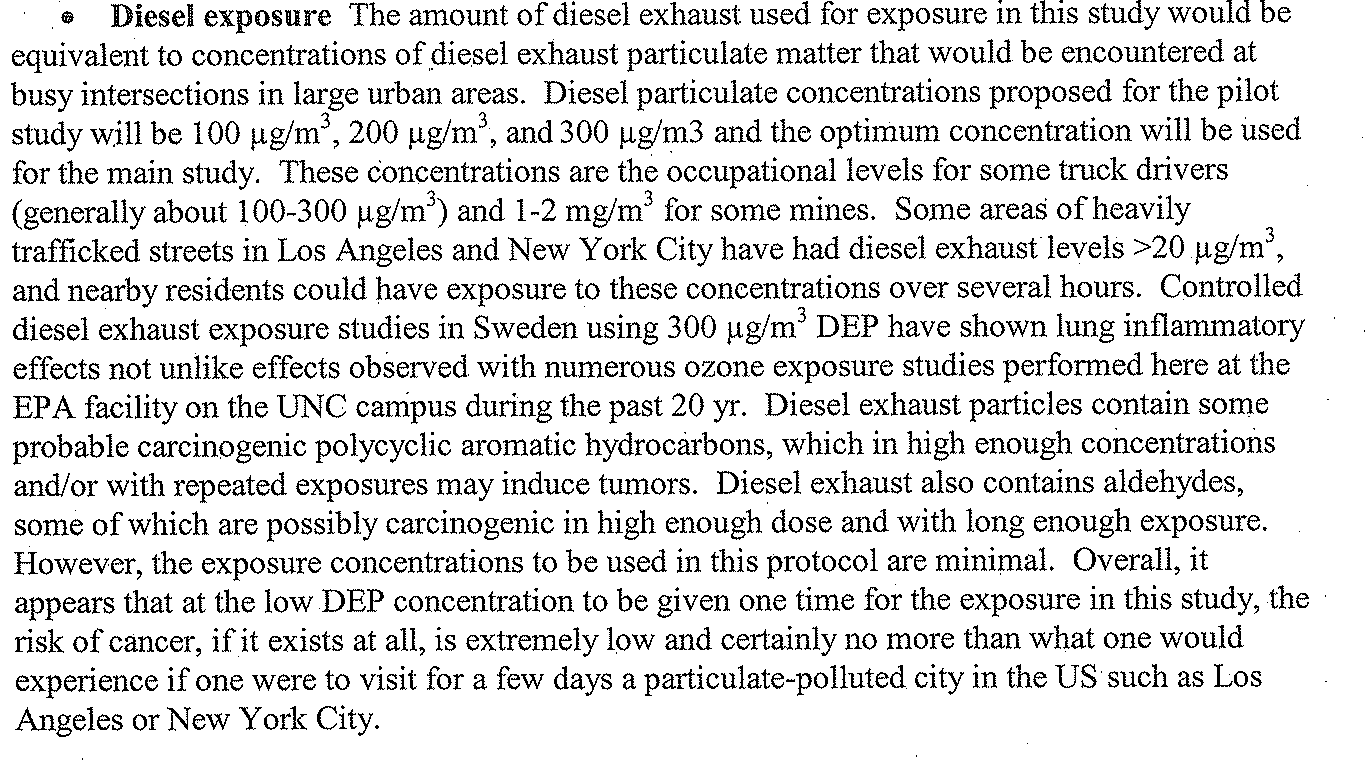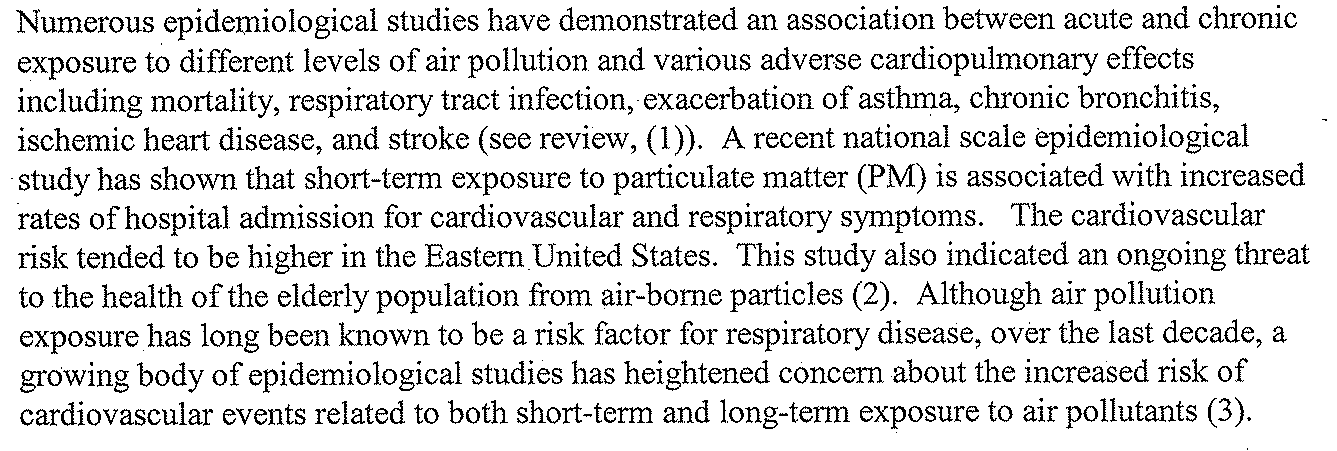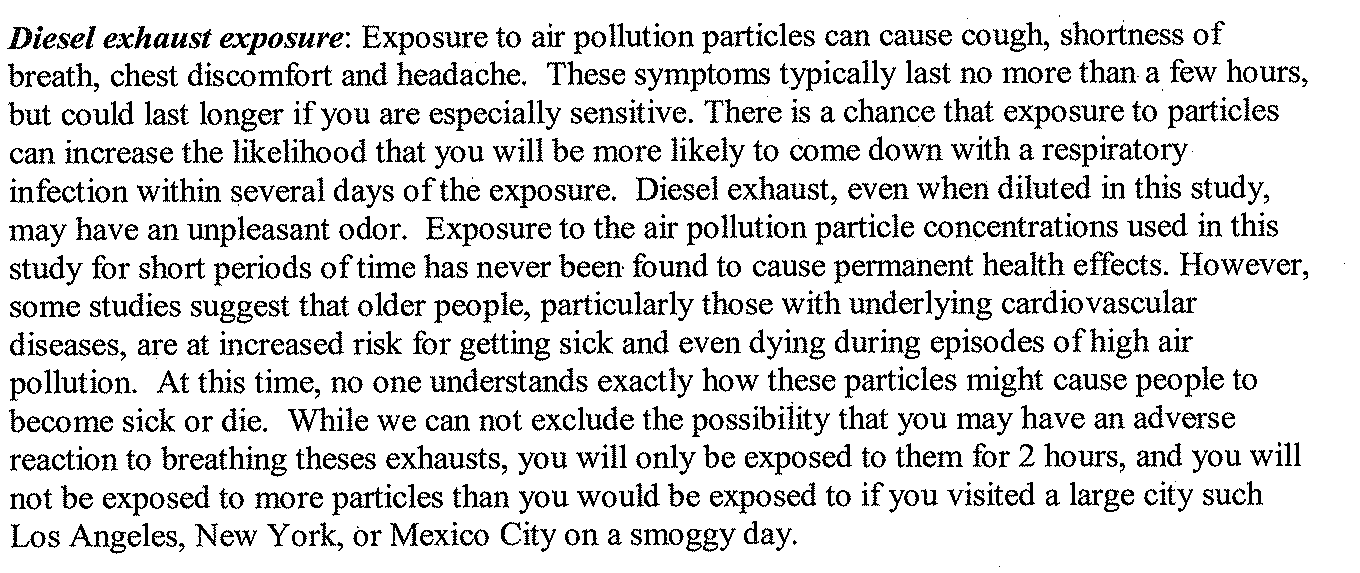In 2007, the EPA began testing for the effects of diesel exhaust on “healthy, older adults” and whether dietary supplemanttion with omega-3 fatty acids would reduce any adverse effects of the diesel exhaust exposure [Click the images to enlarge].
In these experiments, “older adults” meant study subjects of up to 75 years of age — 5 years more than the older adults (with metabolic syndrome) exposed to PM2.5 and ultra fine particles starting in 2004.
The EPA planned to expose these seniors to very high levels of diesel exhaust, as follows:
And these levels are much higher than your typical Chapel-Hill, NC-area resident would normally be exposed to:
Here’s how the EPA views diesel exhaust:
EPA has not adopted specific risk estimates for diesel exhaust but has concluded that diesel exhaust is a likely human carcinogen and ranks with the other substances that the national-scale assessment suggests pose the greatest relative risk to human health.
But wait, that’s not all. In a brochure entitled “Diesel Exhaust in the United States,” the EPA says:
Diesel exhaust contains tiny particles known as fine particulate matter. These tiny or “fine” particles are so small that several thousands of them could fit in the period at the send of this sentence. Diesel engines are one of the largest sources of fine particulate matter other than natural causes such as forest fires. Diesel exhaust also contains ozone-forming nitrogen oxides and toxic air pollutants.
Fine particles and ozone pose serious public health problems. Exposure to these pollutants causes lung damage and aggravates existing respiratory diseases such as asthma.
Nationwide, particulate matter — especially the fine particles such as those in diesel exhaust — cause 15,000 premature deaths every year.
Diesel exhaust is thought to be a likely human carcinogen.
Note that diesel exhaust contains the highly lethal, according to EPA, PM2.5.
And just who is most at risk from diesel exhaust according to the EPA brochure?
People with existing heart or lung disease, asthma or other respiratory problems are most sensitive to the health effects of fine particles as are children and the elderly. [Emphasis added]
As in the case of PM2.5 and ultrafine particles, the EPA discloses to the UNC IRB just how dangerous it believes air pollution, PM2.5, ultrafine particles and diesel exhaust to be.
Later, the EPA confusingly adds:
In true guinea pig fashion, the elderly study recruits get all the risk but no benefits from the experiments.
In exchange for risk life and health, the elderly adults will be paid the princely sum of $12 per hour (plus mileage) — up to a maximum of $1,087.
Below is how the EPA confusingly described the risks of diesel exhaust to the elderly subjects — you may cough or you may die…:
And should anything go wrong during the experiment, the EPA told study subjects that they are basically on their own.






